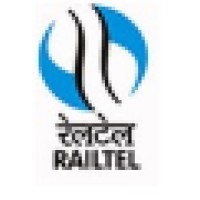Urban Infrastructure and Economic Growth: A Comprehensive Overview of Recent Developments in India
September 3, 2024, 9:32 am

Location: India, Maharashtra, Mumbai
Employees: 10001+
Founded date: 1983
Total raised: $500M
In the ever-evolving landscape of urban infrastructure and economic growth, recent developments in India highlight a significant shift towards sustainability and modernization. The recent surge in investments, innovative projects, and strategic partnerships paints a promising picture for the future of urban living and economic resilience.
One of the most striking developments is Ultratech Cement's acquisition of a $500 million sustainability-linked loan. This financial maneuver underscores the company's commitment to reducing carbon emissions and enhancing energy efficiency. The funds will support various initiatives aimed at fostering community development and integrating eco-friendly practices into operations. In a world increasingly focused on sustainability, Ultratech's move is a beacon for other corporations, signaling a shift towards greener business models.
In the realm of transportation, GPT Infraprojects has emerged as the lowest bidder for a significant railway infrastructure project valued at Rs 204 crore, awarded by South Eastern Railway in Kolkata. This project is part of ongoing efforts to enhance rail infrastructure, which is crucial for improving operational efficiency and service quality. The railway sector's modernization is vital for boosting economic growth, as it facilitates smoother movement of goods and passengers across the country.
The real estate sector is also witnessing dynamic changes. Godrej Properties has successfully bid for two luxury plots in Gurugram, with a substantial bid of Rs 515 crore. This acquisition not only reinforces Godrej's strong position in the real estate market but also aligns with the growing demand for high-end residential projects. As urbanization accelerates, the need for quality housing in prime locations becomes paramount, and Godrej's strategic vision positions it well to capitalize on this trend.
Moreover, the National Industrial Corridor Development Programme is gaining momentum, with a reported investment of Rs 286 billion. This ambitious initiative aims to establish new industrial cities as "Smart Cities," integrating next-generation technologies across various infrastructure sectors. By promoting the development of advanced industrial hubs, the Indian government is positioning the country to compete with top global manufacturing and investment destinations. The integrated industrial corridors will not only boost growth in the manufacturing sector but also encourage systematic urbanization, creating employment opportunities and fostering socio-economic development.
In a bid to enhance connectivity, the Indian Cabinet has approved a new railway line linking Manmad and Indore, valued at Rs 18,036 crore. This project is expected to significantly improve transportation infrastructure, facilitating smoother movement of goods and passengers. Such initiatives are crucial for regional trade and economic upliftment, demonstrating the government's commitment to modernizing the railway network.
The introduction of SBI's new FASTag design aims to reduce travel time for commuters on highways. This innovative solution utilizes Radio Frequency Identification (RFID) technology to facilitate seamless toll payments, enhancing the overall travel experience. By streamlining toll collection processes, the initiative not only benefits commuters but also supports the government's broader goals of improving transportation efficiency.
In the renewable energy sector, Coal India Limited (CIL) has invited bids for a 300 MW solar project in Gujarat. This initiative reflects the growing emphasis on clean energy sources within the country, aligning with India's commitment to expanding its renewable energy capacity. The successful bidder will play a crucial role in harnessing solar power, contributing to sustainable energy production and reducing reliance on fossil fuels.
The government's focus on infrastructure development is further exemplified by the approval of the final survey for the Nashik-Dahanu rail line. This new broad gauge rail line is expected to enhance connectivity in Maharashtra, bolstering tourism and economic growth in the region. The project aims to provide easy access to significant cultural sites, thereby stimulating local economies.
Additionally, the introduction of e-auto services at Pune Metro stations aims to improve last-mile connectivity. This initiative addresses a common challenge faced by urban commuters, ensuring that transportation options are readily available upon exiting the metro. By enhancing public transport infrastructure, the initiative contributes to a more efficient urban mobility system.
As the real estate market continues to thrive, recent reports indicate that property registrations in Mumbai are projected to rise by 7% annually. This increase is attributed to strong demand in both primary and secondary property markets, reflecting sustained buyer confidence and a robust economic outlook. The government's support for housing development, coupled with stable interest rates, has positively influenced homebuyer sentiments.
In conclusion, the recent developments in urban infrastructure and economic growth in India signify a transformative phase. From sustainability-linked loans to ambitious railway projects and strategic real estate acquisitions, the landscape is evolving rapidly. These initiatives not only enhance connectivity and living standards but also contribute to the overall economic resilience of the nation. As India continues to embrace innovation and sustainability, the future looks promising for urban development and economic prosperity.
One of the most striking developments is Ultratech Cement's acquisition of a $500 million sustainability-linked loan. This financial maneuver underscores the company's commitment to reducing carbon emissions and enhancing energy efficiency. The funds will support various initiatives aimed at fostering community development and integrating eco-friendly practices into operations. In a world increasingly focused on sustainability, Ultratech's move is a beacon for other corporations, signaling a shift towards greener business models.
In the realm of transportation, GPT Infraprojects has emerged as the lowest bidder for a significant railway infrastructure project valued at Rs 204 crore, awarded by South Eastern Railway in Kolkata. This project is part of ongoing efforts to enhance rail infrastructure, which is crucial for improving operational efficiency and service quality. The railway sector's modernization is vital for boosting economic growth, as it facilitates smoother movement of goods and passengers across the country.
The real estate sector is also witnessing dynamic changes. Godrej Properties has successfully bid for two luxury plots in Gurugram, with a substantial bid of Rs 515 crore. This acquisition not only reinforces Godrej's strong position in the real estate market but also aligns with the growing demand for high-end residential projects. As urbanization accelerates, the need for quality housing in prime locations becomes paramount, and Godrej's strategic vision positions it well to capitalize on this trend.
Moreover, the National Industrial Corridor Development Programme is gaining momentum, with a reported investment of Rs 286 billion. This ambitious initiative aims to establish new industrial cities as "Smart Cities," integrating next-generation technologies across various infrastructure sectors. By promoting the development of advanced industrial hubs, the Indian government is positioning the country to compete with top global manufacturing and investment destinations. The integrated industrial corridors will not only boost growth in the manufacturing sector but also encourage systematic urbanization, creating employment opportunities and fostering socio-economic development.
In a bid to enhance connectivity, the Indian Cabinet has approved a new railway line linking Manmad and Indore, valued at Rs 18,036 crore. This project is expected to significantly improve transportation infrastructure, facilitating smoother movement of goods and passengers. Such initiatives are crucial for regional trade and economic upliftment, demonstrating the government's commitment to modernizing the railway network.
The introduction of SBI's new FASTag design aims to reduce travel time for commuters on highways. This innovative solution utilizes Radio Frequency Identification (RFID) technology to facilitate seamless toll payments, enhancing the overall travel experience. By streamlining toll collection processes, the initiative not only benefits commuters but also supports the government's broader goals of improving transportation efficiency.
In the renewable energy sector, Coal India Limited (CIL) has invited bids for a 300 MW solar project in Gujarat. This initiative reflects the growing emphasis on clean energy sources within the country, aligning with India's commitment to expanding its renewable energy capacity. The successful bidder will play a crucial role in harnessing solar power, contributing to sustainable energy production and reducing reliance on fossil fuels.
The government's focus on infrastructure development is further exemplified by the approval of the final survey for the Nashik-Dahanu rail line. This new broad gauge rail line is expected to enhance connectivity in Maharashtra, bolstering tourism and economic growth in the region. The project aims to provide easy access to significant cultural sites, thereby stimulating local economies.
Additionally, the introduction of e-auto services at Pune Metro stations aims to improve last-mile connectivity. This initiative addresses a common challenge faced by urban commuters, ensuring that transportation options are readily available upon exiting the metro. By enhancing public transport infrastructure, the initiative contributes to a more efficient urban mobility system.
As the real estate market continues to thrive, recent reports indicate that property registrations in Mumbai are projected to rise by 7% annually. This increase is attributed to strong demand in both primary and secondary property markets, reflecting sustained buyer confidence and a robust economic outlook. The government's support for housing development, coupled with stable interest rates, has positively influenced homebuyer sentiments.
In conclusion, the recent developments in urban infrastructure and economic growth in India signify a transformative phase. From sustainability-linked loans to ambitious railway projects and strategic real estate acquisitions, the landscape is evolving rapidly. These initiatives not only enhance connectivity and living standards but also contribute to the overall economic resilience of the nation. As India continues to embrace innovation and sustainability, the future looks promising for urban development and economic prosperity.

